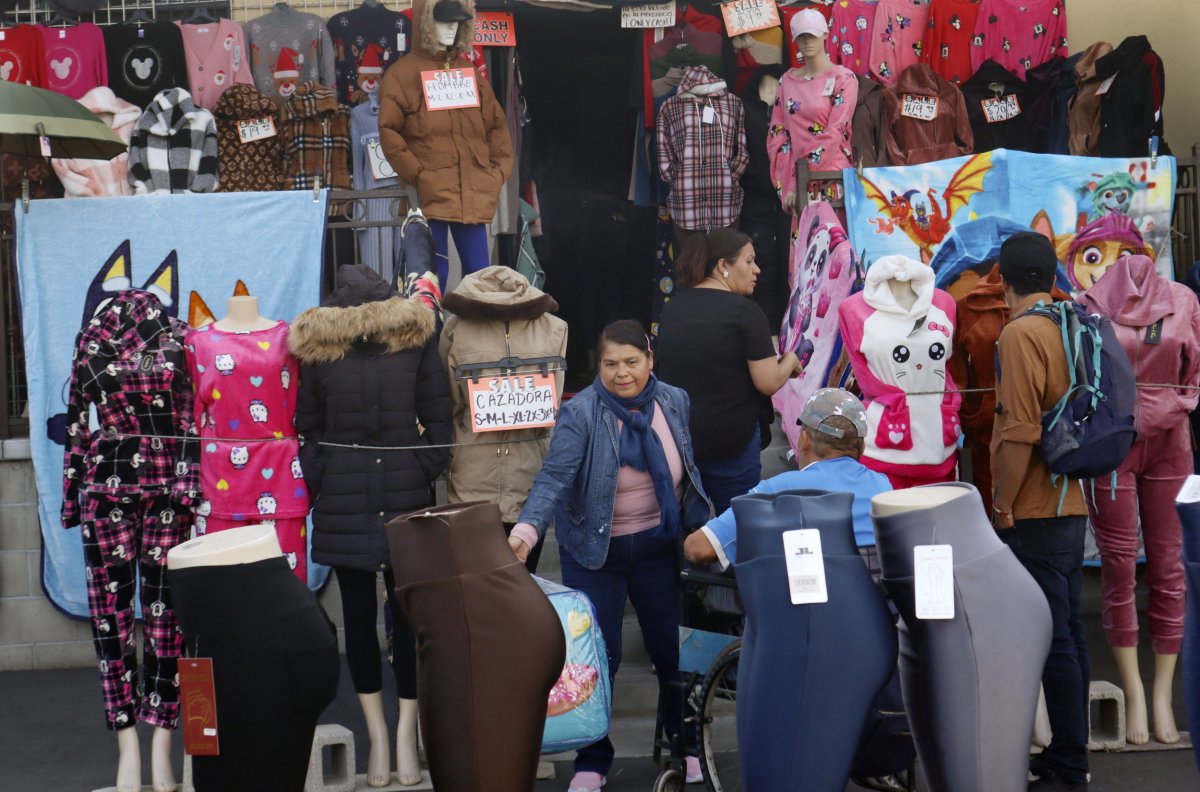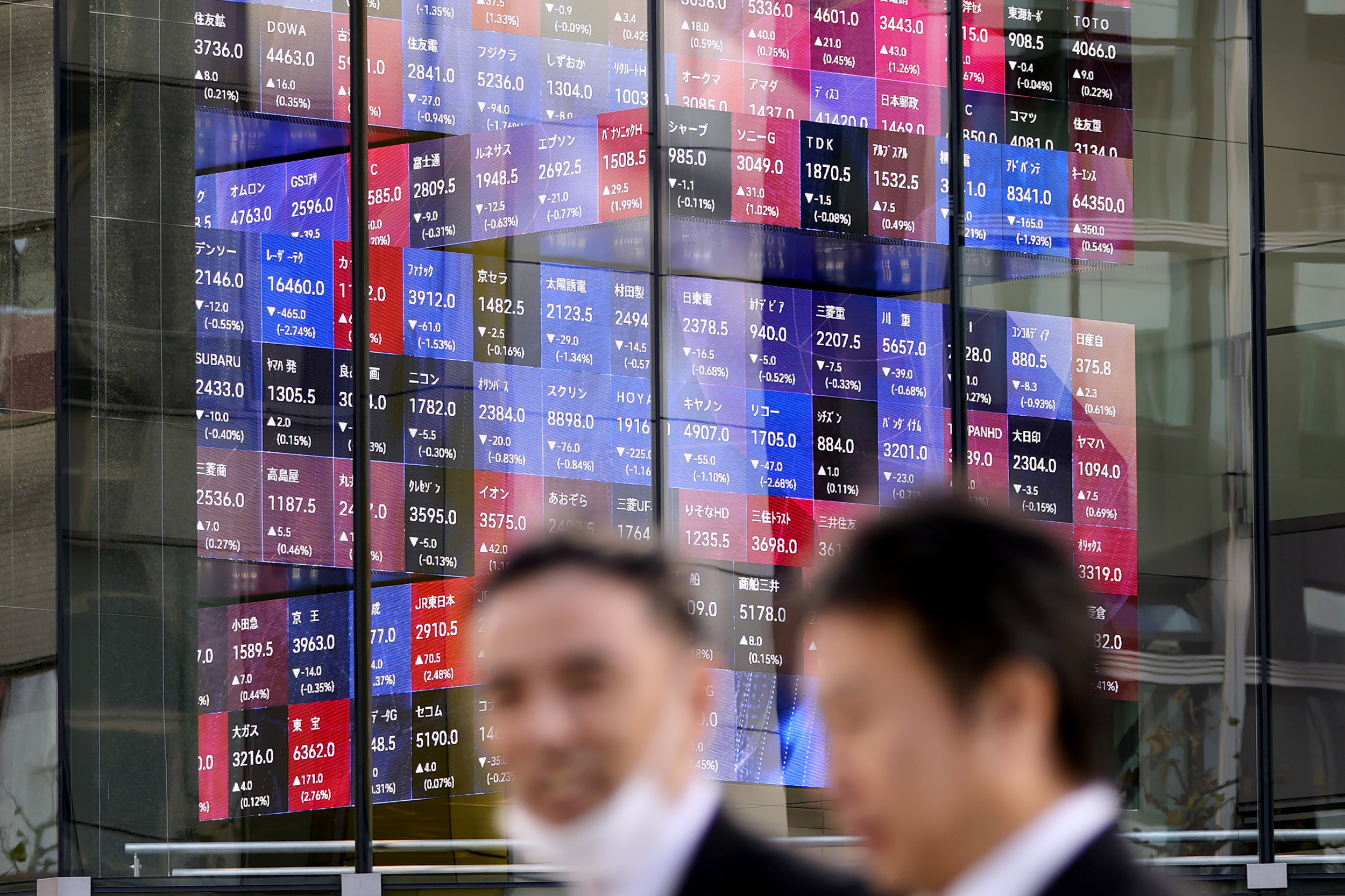Asian stock markets posted uneven performances on Thursday, with gains in Tokyo and Seoul offset by declines in Hong Kong and Shanghai.
The regional divergence reflects investor caution following a technology-led slump on Wall Street, where key indexes fell ahead of the Thanksgiving holiday.
Japan‘s Nikkei 225 rose 0.6 percent to 38,349.06, buoyed by optimism in equities, while Australia‘s S & P/ASX 200 gained 0.5 percent to 8,444.30.
South Korea‘s Kospi edged up less than 0.1 percent to 2,504.67, helped by the Bank of Korea’s decision to cut its benchmark interest rate by a quarter point to three percent.
The rate reduction, aimed at stimulating the slowing economy, came as the central bank lowered its growth projections to 2.2 percent for 2024 and 1.9 percent for 2025.
AP Photo/Shuji Kajiyama
Major US Indices Close Lower Due to Tech Losses
In China, markets retreated after recent rallies prompted profit-taking.
Hong Kong’s Hang Seng Index dropped 1.2 percent to 19,366.96, while the Shanghai Composite fell 0.4 percent to 3,295.70. Investor sentiment was also dampened by concerns over slowing recovery momentum in the world’s second-largest economy.
These developments came while U.S. markets delivered a weak performance on Wednesday. The S & P 500 declined 0.4 percent, the Dow Jones Industrial Average slipped 0.3 percent, and the Nasdaq composite, which has a heavy concentration of technology stocks, lost 0.6 percent.
Overall, Big Tech was a drag on the market, with companies including Nvidia and Microsoft also posting declines. Nvidia’s Q3 earnings report exceeded analysts expectations, generating $35.1 billion in sales.
European markets, however, opened higher on Thursday, with Germany‘s DAX advancing 0.7 percent to 19,394.41, France‘s CAC 40 climbing 0.6 percent to 7,185.13, and Britain‘s FTSE 100 adding 0.2 percent to 8,290.37.

Brandon Bell/Getty Images
Potential Impact of Trump Tariffs on Inflation
In the United States, economic data showed that growth remained solid despite inflationary pressures. The Commerce Department reported an annualized expansion rate of 2.8 percent from July to September, supported by strong consumer spending and increased exports.
However, inflation, as measured by the Federal Reserve‘s preferred personal consumption expenditures (PCE) index, rose to 2.3 percent in October from 2.1 percent the previous month.
The latest data point to persistent pricing pressures even while the Federal Reserve signaled easing monetary policy with rate cuts earlier this year.
Investors are watching closely for a likely quarter-point reduction in December.
However, concerns about higher prices loom, with President-elect Donald Trump pledging to impose new tariffs on Mexico, Canada, and China when he takes office in January.
The policy could raise prices on many products—raising inflation and prompting the Fed to rethink future cuts to interest rates.

SANDY HUFFAKER/AFP via Getty Images
Russian Ruble Hits Lowest Level Since 2022
Currency markets signaled broader uncertainty. The Russian ruble weakened significantly, trading at 108.01 per dollar on Thursday, its lowest level since the 2022 invasion of Ukraine.
Meanwhile, the U.S. dollar gained against the Japanese yen, rising to 151.90 from 151.12 yen. The euro fell to $1.0547 from $1.0567.
Oil prices slipped slightly, with U.S. benchmark crude falling 28 cents to $68.44 per barrel and Brent crude dropping 26 cents to $72.04 per barrel.
U.S. markets will reopen Friday for a shortened trading session following Thanksgiving.
This article includes reporting from The Associated Press


